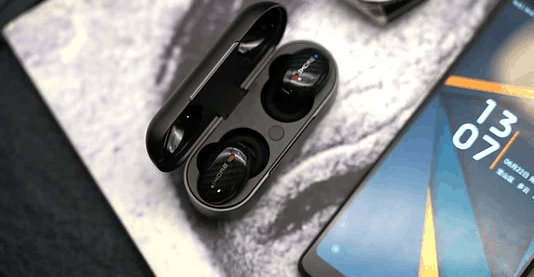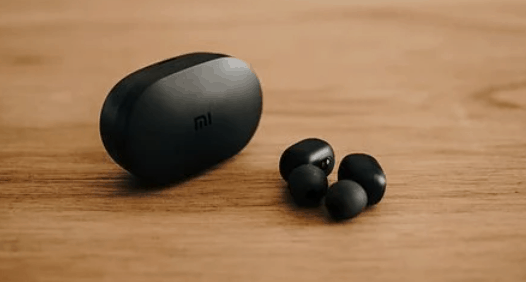Wireless technology is always a game-changer in any industry. It makes everything easier and more convenient.
Wireless headphones, earbuds, and headsets have the same effect in the audio industry. They make it much easier to listen to music, watch movies, and play games both at home and outdoors. Now, you can listen to your favorite podcast while cycling without worrying about cables.
Wireless headsets are great.
But how do they work?
What's the technology behind them?
In this article, I'll explain the inner workings of wireless headsets in simple language. I will also show you how you can get the most bang for your buck when shopping for these gadgets.
Let's dive in.
How do wireless headphones work?

Wireless headphones primarily work by transmitting audio signals through a wireless channel. This could be through radio signals or infrared signals, depending on the device.
Using the type of technologies involved, we can group wireless headphones into 4 major types: Infrared, UHF, Bluetooth, and Wifi headphones.
Infrared headphones
Infrared headphones work with "line of sight" technology. This means that the headphones must always be facing the audio source for an unbroken connection. It's just like you have in most remotes, where you must point at the TV or DVD directly to establish a connection.
It's mostly used in cars with headrest TVs and DVDs. The person using the headphones would be seated directly in front of the screen, so an infrared connection is effective.
However, this connection only works over short distances. Once you're not in the line of sight or you go a bit farther back, the connection starts to break. It's just like you have in infrared remotes.
So, if you're not using your headphones for car TVs or DVDs, the infrared may not be the best option for you.
RF wireless headphones
RF headphones transmit and receive audio signals through radio frequencies. It uses frequency modulation technology to send audio over long distances. The technology works like you're tuning in to a radio station with your headset.
This technology covers very long distances, sometimes up to 300 meters. That's more than most Bluetooth headphones. However, it is susceptible to interference. The interference can come from phones, radios, UHF mic systems, and other wireless devices.
Usually, RF headphones come with transmitters. You can connect the transmitter to your TV, computer, or AV receiver. This setup can make your system wireless, even if it doesn't have RF capabilities. The transmitter gets the audio from the source and sends it to your headphones.
Other wireless headphones use radio frequency, but RF headphones use a wider range of 3kHz to 300GHz. Bluetooth and WiFi use a much narrower range as we will see shortly.
Bluetooth wireless headphones

Bluetooth headsets are the most popular kind of wireless headphones. This is primarily because they are easily paired with mobile devices. Other options either have a short connection distance or need a transmitter to work.
Bluetooth headsets use radio frequencies between 2.4 GHz and 2.483.5 GHz.
One major benefit of Bluetooth technology is its ability to find interference-free channels and work with them. This feature is called adaptive frequency hopping. This is why Bluetooth headsets are the best when you're trying to avoid wireless interference.
In terms of range, most Bluetooth headphones give you up to 33 feet (10 meters) of distance for clear listening.
Wifi Headphones
Like other wireless headphones, WiFi uses radio frequencies. However, it is limited to 2.4GH and 5.0 GHz. to use most WiFi headphones, you need a dock or transmitter. Most of these headsets come with their own. You should connect the transmitter to your audio source via an optical cable or analog audio cable.
Most WiFi headphones are on the high end, so if you're looking for budget-friendly options, you should consider Bluetooth.
Also, WiFi gives you more than 100 feet (30 meters) connection distance. That's way more than Bluetooth headphones give.
Having said that, one downside to WiFi headphones is portability. They're not ideal for use with your mobile phone or other devices you use on the move.
What should you consider when buying wireless headphones?

Range
How much distance can you get between the audio source and the headphones? This is essential because some use cases demand more distance. If you watch movies with your wireless headphones in a large living room, you will need more range.
On the other hand, if your headphones are for gaming only, you'll probably be closer to your TV or monitor anyways, so the range may not be an issue.
For Bluetooth headphones, do for Bluetooth 4.0 and above – they give you up to 10 meters. WiFi and RF headphones give you much more range. Infrared headphones are not ideal for in-house use, only in cars.
Sound quality
What kind of sound do you prefer from your headphones?
If you're a hip-hop or electronic music lover, you would love to have solid, punchy bass. For more hardcore bassheads, you would prefer wireless headphones with higher bass levels than midrange and treble.
Also, if you like acoustic sounds like jazz and other alternative styles, you may go for a balanced headset. Audiophiles like me, always go for wireless headphones with a flat response or something close.
However, if you're a gamer or movie lover, you should consider wireless headphones with surround sound, to have that immersive cinema-like experience.
Comfort
How long can you wear your wireless headphones before you start feeling uncomfortable?
It depends a lot on the weight and material used for the earpads.
To enjoy wearing your headphones for several hours, ensure that it feels light while putting it on, and the earpads are made of soft, plush material that feels good when it presses against your head.
Noise isolation
Sone wireless headphones have active noise cancellation. It's a technology that stops external sound from getting into your ears. It's a great feature, but it also makes the headset's battery run down faster.
Other headphones use the design and build to keep out noise. These headsets have a closed-back, over-ear design that covers the ears completely.
Also read:
13 Best Open Back Headphones
10 Best Noise Isolating Earbuds
8 Best Noise-Canceling Headphones for Airplane Travel
How do wireless earbuds work?

Wireless earbuds are smaller, more portable, and more compact than headphones. There are two major types: Bluetooth earbuds and true wireless earbuds.
Bluetooth earbuds have a physical wired connection between the two earbuds. But they connect to the audio source via Bluetooth. True wireless earbuds do not have any wired connection between the earbuds. The two earbuds are completely separate.
Bluetooth earbuds or wireless earbuds work just like Bluetooth headphones. But true wireless earbuds are quite different.
How do True Wireless earbuds work?
True wireless earbuds work in two major ways – the primary/secondary earbud arrangement and the independent left/right signaling system.
Primary/secondary earbud arrangement
One of the two earbuds is the master or primary bud. This one receives the information from the audio source via Bluetooth and sends it to the other earbud. It also compensates for the latency involved while sending the signal. This occurs so that your music will arrive at your ears at the same time, not milliseconds apart.
Independent left/right signaling system
The independent left/right signaling system basically uses both earbuds as primary. So, each earbud is connected to your phone independently. In this case, there's no need for latency compensation.
Earbuds that use this technology are more reliable because they rarely have signal drops or latency issues. Also, their stereo sound balance is much more stable and reliable.
Things to consider while buying wireless earbuds

Battery life
Do you prefer to wear your earbuds and use them for the whole day? If yes, then you should carefully choose a pair with long battery life.
For true wireless earbuds, it is unlikely that you will find a pair with more than 8 hours of battery life. The earbud case usually gives you an extra source of power. Many cases will give you an extra 6-12 hours of charge. But this means you have to take the earbuds off and put them in the case for charging.
Noise cancellation
Would you like to block out all external noise while using your earbuds? If yes, then you should go for earbuds with active noise cancellation. They are great for long planes and bus rides. The noise-canceling shuts out roaring engine and traffic noises.
However, if you use your earbuds while driving, cycling, or running outdoors, you should be able to hear some sound from the environment. It's good for your safety.
Water resistance
If you plan to use your earbuds while working out, you must go for sweat-resistant types. If your true wireless earbuds are not water-resistant, using them for running, cycling, or working out will damage them.
Also, it's best to go with water-resistant earbuds if you plan to take them to the beach or pool.
Conclusion
The many different kinds of wireless earbuds and headphones work by transmitting audio signals through wireless connections. They are always more convenient to use than wired headsets.
However, if you're an audiophile and you need superior sound production, you should go for high-end wireless headphones. If you're on a budget, you may consider wired alternatives.

